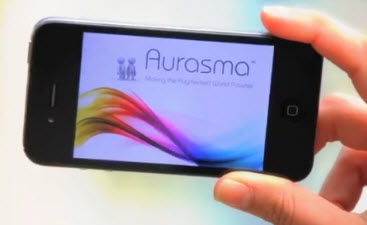Augmented reality to promote Far Cry 3
Augmented reality continues to make waves in the world of print, as some of the world’s most prolific gaming magazines announce that they will be using the technology for upcoming cover stories. Xbox Magazine, Playstation Magazine, and PC Gamer have all announced that they will use augmented reality for special editions of their covers featuring the upcoming game Far Cry 3. To accomplish this, the magazines have teamed with Aurasma, a leading augmented reality platform.
Future US sets sights on interactive technology to engage readers
Future US, which owns the magazines, has decided to use augmented reality in order to engage readers in a more dynamic fashion. The technology has proven itself capable of accomplishing this feat effectively in the past in numerous marketing campaigns. Future US believes that the technology can help bring new content to the audiences of the magazines in a way that they will enjoy and help generate hype behind the looming release of Far Cry 3.
Readers will be able to access exclusive content through special edition covers
Playstation Magazine will be the first to run its augmented reality cover on October 23. Both Xbox Magazine and PC Gamer will run their covers on November 6. Readers with smart phones equipped with the Future AR application will be able to access the digital content that is contained within the covers of these magazines. This content will range from exclusive video footage of the game to interviews with the game’s developers.
Augmented reality may help print remain relevant
When it comes to games, augmented reality is most often used as a gimmick to provide some novelty entertainment to gamers. The technology could help print establish a foothold in a time where most consumers favor their mobile devices over traditional media. Though magazines have managed to hold some favor with consumers, many publications are still feeling the pressure caused by the advent of mobile technology. Thus, these publications must find ways to adapt if they want to continue being relevant with their audience.
Bluebell Wood Children’s Hospice targets tech-savvy consumers
Augmented reality has established itself as a powerful marketing tool and this aspect of the technology has not been lost to non-profit groups in the United Kingdom. The Bluebell Wood Children’s Hospice, a group devoted to the care and service of children with shortened life expectancies, has adoption augmented reality to reach out to high-tech consumers. Like most non-profit advocacy groups, Bluebell Wood Children’s Hospice depends on donations to continue providing service. The organization believes that augmented reality is a viable way to boost fund raising efforts and ensure such campaigns reach tech-savvy individuals.
Organization teams with Rother Print
The Bluebell Wood Children’s Hospice has teamed with Rother Print, a printing services company based in the UK. Together, the duo will make use of the Layar augmented reality platform to develop a campaign that hopes to engage a multitude of c onsumers. Through this campaign, consumers will be able to access digital content provided by the non-profit group and be able to make donations to the organization online through their smart phones or similar mobile devices.
onsumers. Through this campaign, consumers will be able to access digital content provided by the non-profit group and be able to make donations to the organization online through their smart phones or similar mobile devices.
Augmented reality beer mats prove successful amongst consumers
Approximately 500 beer mats associated with the campaign are already in circulation in Travellers Rest in Laughton. Patrons can use their smart phones to activate the augmented reality content that is contained within these beer mats, which ranges from videos to text. The beer mats have already proven quite popular amongst patrons, many of whom have donated to the Bluebell Wood Children’s Hospice using their mobile devices.
Technology may help secure new funding
Augmented reality has proven that it can engage a wide audience of mobile consumers in the past. These consumers have also proven their love of augmented reality by engaging in the various marketing campaigns that have made use of the technology over the years. This marketing potential could translate into serious benefits for non-profits groups looking to engage a growing audience that often goes untapped in the world of advocacy.


 onsumers. Through this campaign, consumers will be able to access digital content provided by the non-profit group and be able to make donations to the organization online through their smart phones or similar mobile devices.
onsumers. Through this campaign, consumers will be able to access digital content provided by the non-profit group and be able to make donations to the organization online through their smart phones or similar mobile devices.